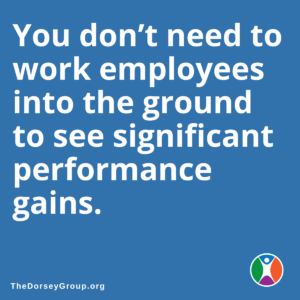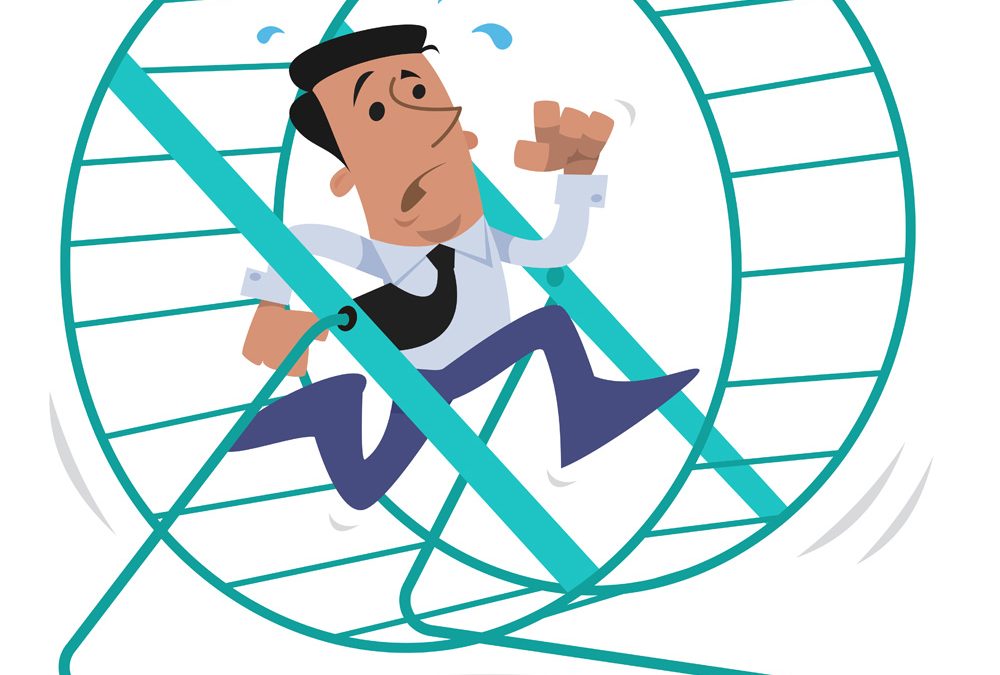First, evaluate efficiency by looking at how much is being accomplished – not how busy everyone is.
Here’s the visual: A hamster running around and around on its wheel. He’s busy and working hard, but is he actually getting anywhere? Now think about your workplace. Is there constant activity? Even a bit of chaos? If the answer is yes, but you’re still not hitting your goals, there’s a larger issue at play. Busyness doesn’t always translate into productivity.

Companies that struggle with productivity often discover that there’s a breakdown in their system. Whether it’s time being wasted searching for information or tools, or workarounds that have been built into the process, this breakdown prevents employees from working at peak performance. With that in mind, let’s take a look at how you can eliminate waste in your workplace to optimize performance:
Evaluate your process
“We’ve always done it this way” is a poor excuse for doing just about anything, but nowhere is this more evident than in the workplace. When a problem arises, we’re more likely to build a workaround or find a quick fix than we are to go back and solve it at the source. At the time, it seems like a smart way to keep production moving, but the workaround eventually becomes part of the process, which erodes work-center optimization and causes productivity to drop.
People are spending time fixing things they don’t need to fix or doing things the wrong way (or the long way) because the issue was never resolved at its source.
After you evaluate your processes ask yourself: Do your workers have everything they need to do their jobs with the most efficiency? Are they taking the right steps, in the right order, and are all the tools necessary immediately accessible to them?
Assess time variations in required tasks
Everyone works at a different speed and has their own rhythm. But when it comes to an optimized workspace, there should be a standard timeframe to get tasks accomplished.
Although there will always be variation between one worker and the next—it should be slight, and each worker should have little to no variation within their own tasks. If you timed your team members as they performed tasks, it should take them the same amount of time, every time.
Big gaps in performance times show that there is waste in the process and is a signal that a work center hasn’t been, or is no longer, optimized. So why do gaps occur?
To find out, it’s important to evaluate how much time your team members actually spend working at their desks or workstations. Are they focused and driving through one task after another or are they spending precious time figuring out what to do next? All these factors take away from their productivity level and cause variation in the process.
Additionally, when workers are not actually working—what are they doing? Let’s say you’re running a call center and there’s a lull in call traffic. What are your workers doing when they’re waiting for calls to come through? What should they be doing?
If they are just sitting around waiting for the phone to ring, surfing online or checking their personal email, are they really maximizing their efficiency? It’s important for your team members to know what they could and should be doing when they are not busy with other tasks.
What does optimal performance look like for your organization?
It’s not a matter of working faster or harder. You don’t need to work employees into the ground to see significant performance gains. Even an extra 10 to 15 minutes can increase productivity by 10 to 20 percent.

Often, optimizing performance is about what you need to stop doing. When people understand what’s expected of them and how their work ties into organizational goals, they’ll be able to stay focused on priorities that drive real progress.
The Dorsey Group can help unleash your team’s potential and power peak performance. For more information, contact us at www.TheDorseyGroup.org or (954) 629-5774.

